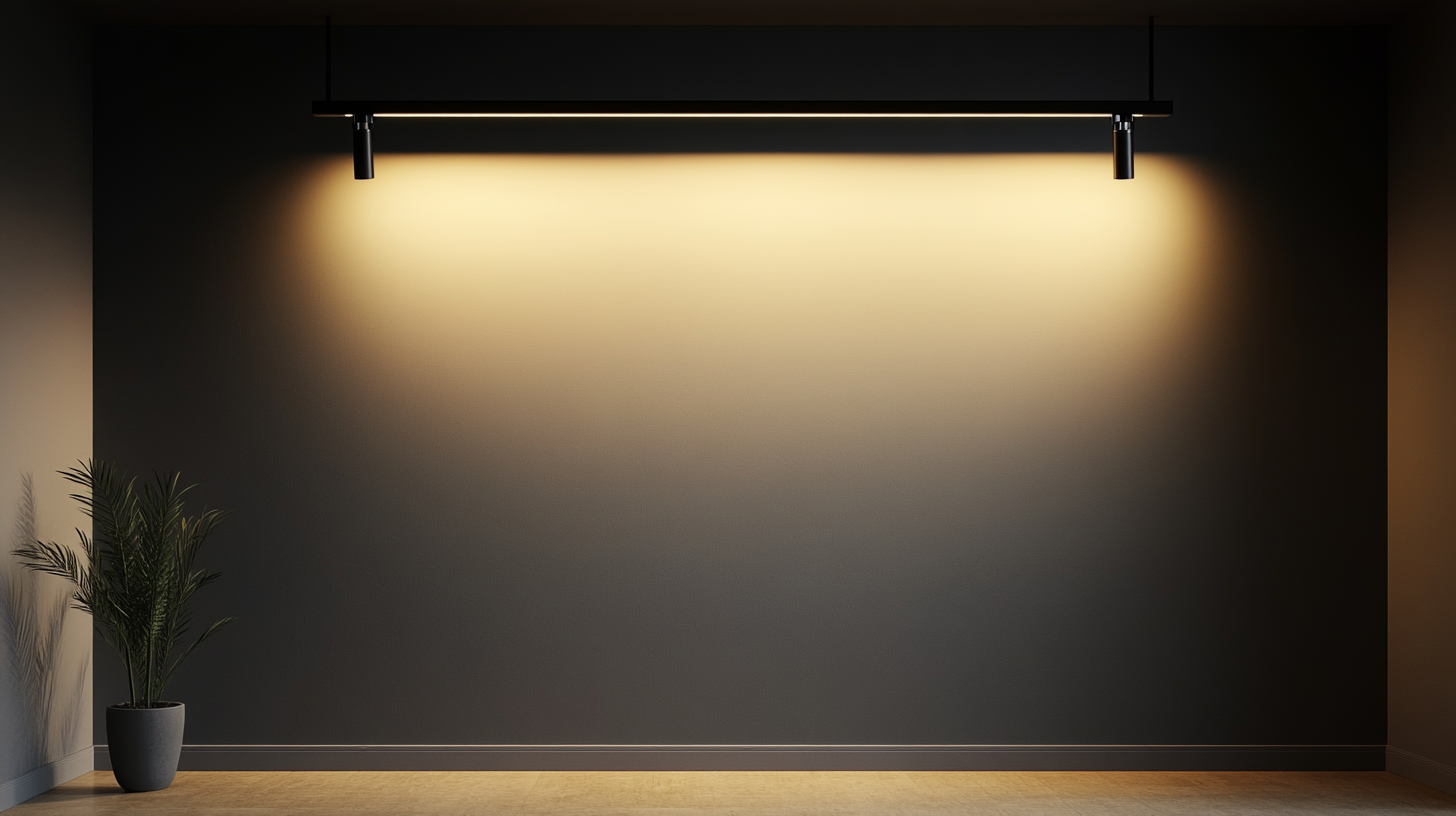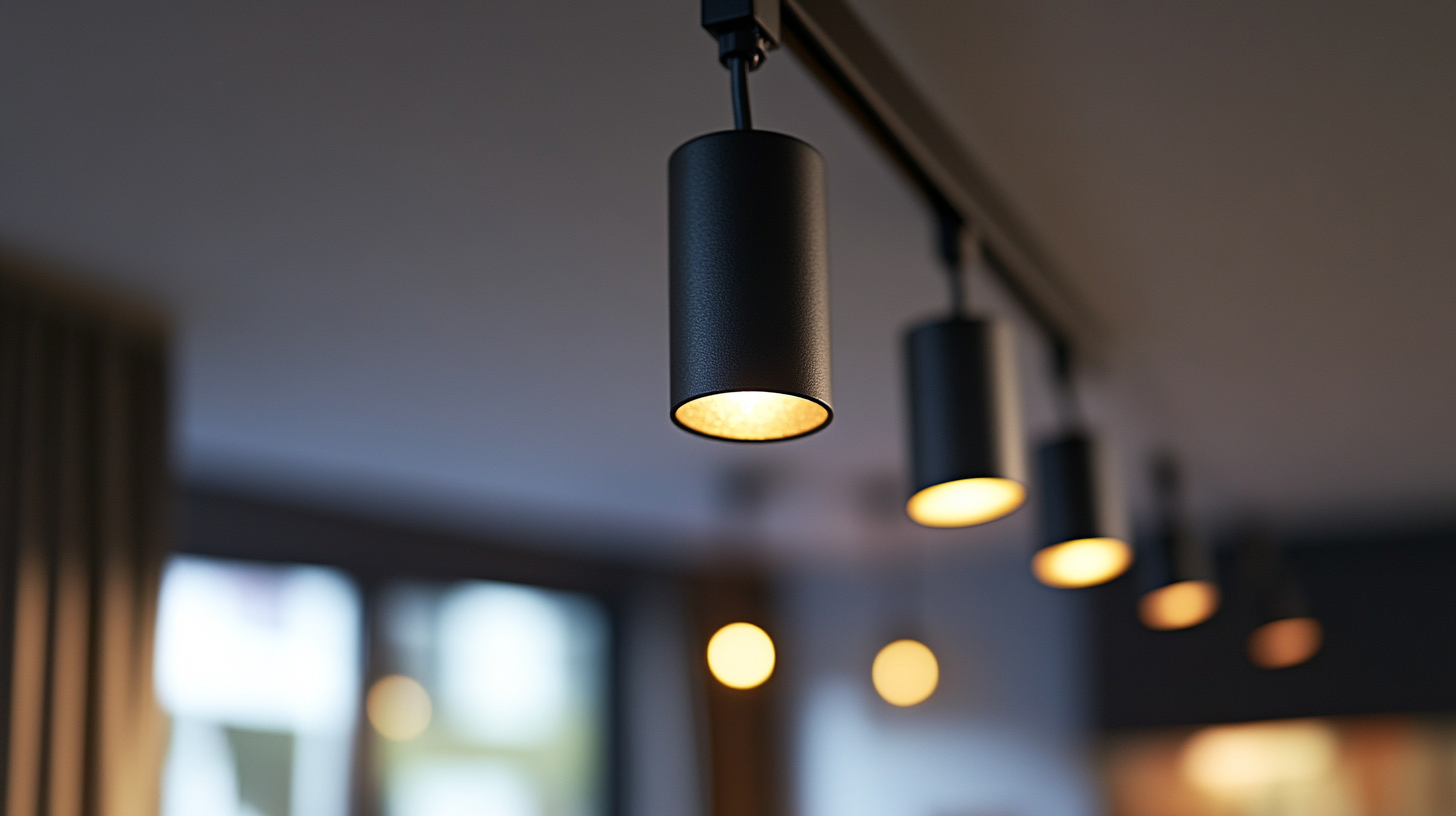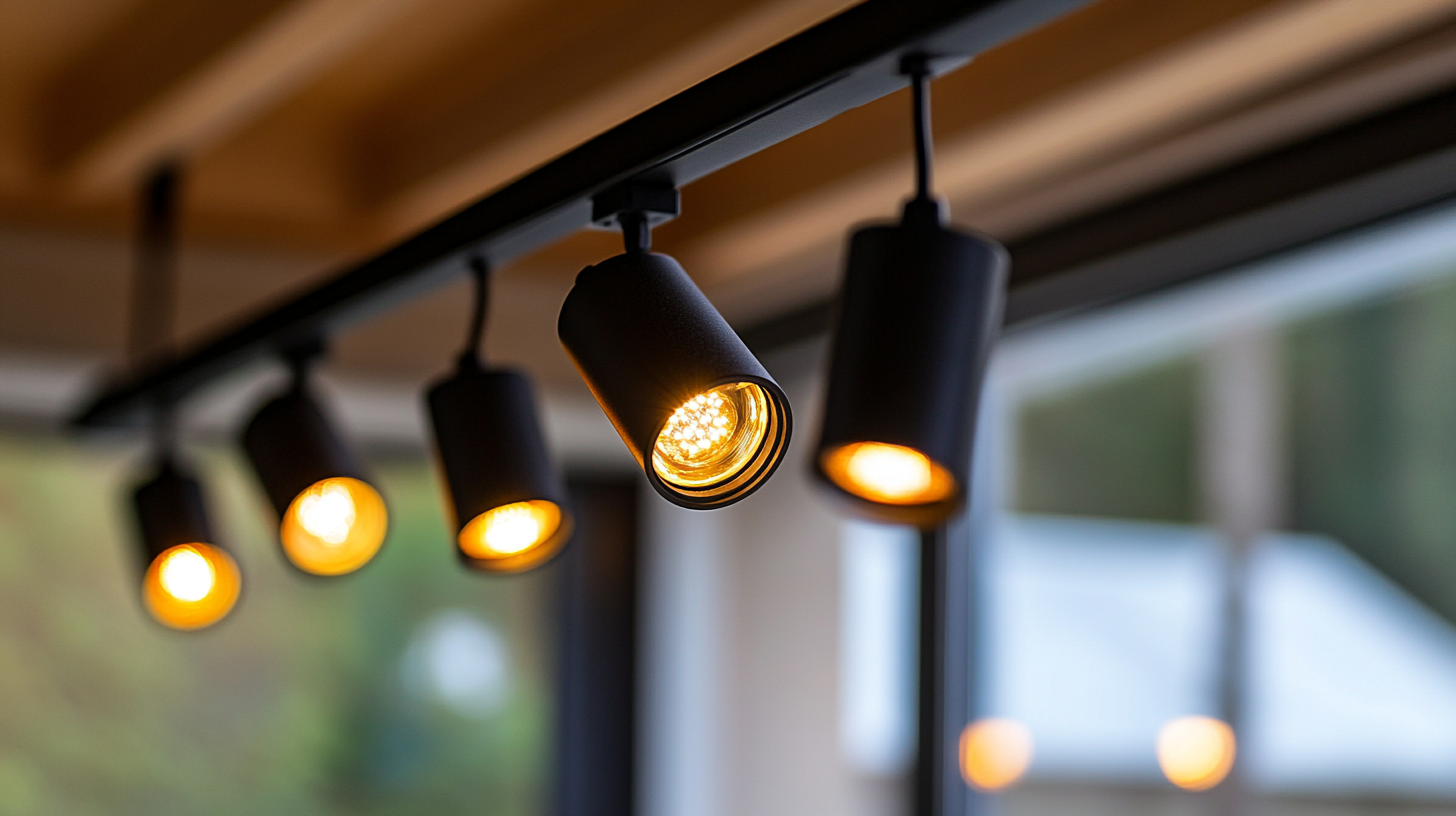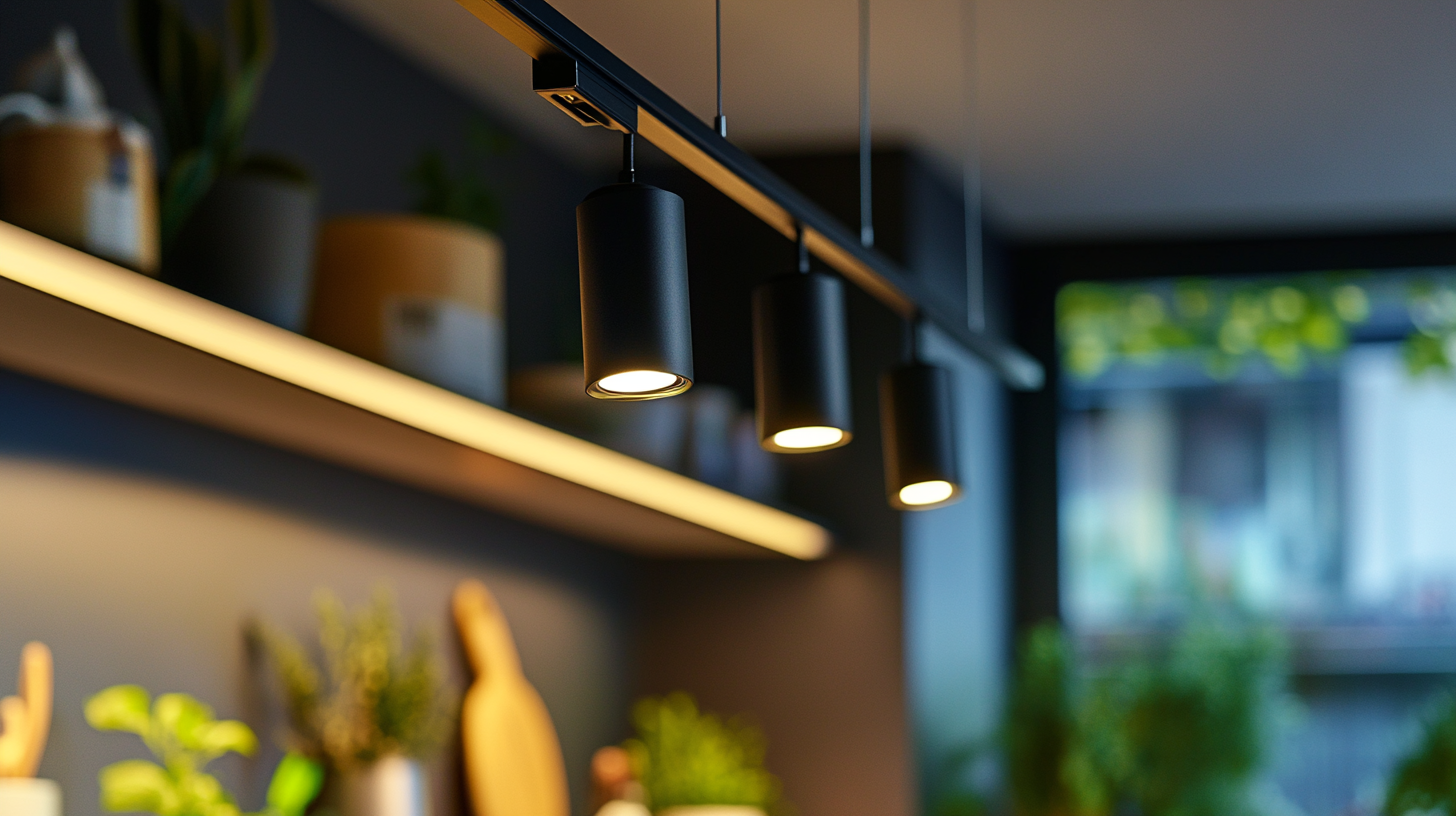Edison LED Lighting
Projects
Discover the Essential Specification and Installation Guide for Track Lights
Track lights have become an essential feature in modern interior design, offering both versatility and efficiency in illuminating spaces. According to a recent report by the Energy Information Administration, lighting accounts for approximately 11% of the total electricity consumption in U.S. homes, indicating a critical need for energy-efficient solutions. Track lighting systems, known for their flexibility in directing light where it is needed most, are increasingly popular in both residential and commercial settings. A survey conducted by the American Lighting Association found that 68% of homeowners are considering installing track lights as part of their home improvement projects due to their customizable nature and aesthetic appeal.
As the trend toward open-concept living continues to grow, track lights serve as an effective solution for achieving optimal lighting while maintaining a clean and uncluttered look. According to the International Association of Lighting Designers, the use of track lights can enhance the overall ambience of a space and even increase property value, making them a wise investment. This blog aims to provide an essential specification and installation guide for track lights, equipping homeowners and designers with the knowledge to choose the right system for their needs while maximizing their benefits.

Understanding Different Types of Track Lights for Your Space
When it comes to track lighting, understanding the various styles available is essential for any space. Among the most popular choices are monorail track lighting, which features a single rail that allows for a sleek, modern look while maintaining flexibility in light positioning. Industrial bulb tracks have also made a notable comeback, providing a vintage aesthetic that fits well in lofts and contemporary homes alike. Whether you're aiming for a minimalist vibe or a more dramatic effect, there's a track lighting option that caters to your design needs. Moreover, in open floor plans, layering your lighting becomes crucial. Design experts recommend mixing different light sources rather than sticking to a uniform look. This approach not only enhances the visual interest of your space but also creates a more inviting atmosphere. For instance, combining artistic track lights with sleek LED strips can add depth and character. Flexible tracks, allowing you to bend the light in various directions, can further enhance the functional and aesthetic elements of your lighting design. As trends shift, track lighting continues to regain its popularity, especially with the integration of smart technology. This evolution allows for enhanced control and customization of your lighting, making it not only stylish but highly functional. Embracing the diversity of track lighting can dramatically transform your environment, ensuring that your space feels both contemporary and tailored to your personal taste.

Key Specifications to Consider When Choosing Track Lighting
When selecting track lighting for your space, understanding the key specifications is paramount. The main considerations include wattage, beam angle, and the compatibility of bulbs. Wattage determines the brightness and energy consumption of the track lights, while the beam angle affects how the light disperses across the room. A narrower beam angle creates focused light, ideal for highlighting artwork or specific areas, whereas a wider angle provides a more ambient light for general illumination.
Moreover, consider the type of bulbs that suit your needs. LED bulbs are increasingly popular due to their energy efficiency and longevity. When paired with the right fixtures, they can significantly reduce energy costs, similar to how innovations in AI technology are driving down operational expenses across various industries. Just as NVIDIA’s recent GTC presentation showcased advanced techniques aimed at optimizing costs, choosing the right track lighting setup can lead to significant savings over time.
Installation also plays a crucial role in achieving the desired lighting effect. Make sure to assess the layout of your space and the height of your ceilings. The flexibility of track lighting allows for various configurations, making it adaptable to different room designs. Whether you’re focusing on modern aesthetics or functional design, track lighting can be tailored to meet your specifications while enhancing the overall ambiance of the area.

Step-by-Step Installation Process for Track Lighting Systems
Installing track lighting can significantly enhance the ambiance and functionality of your space. The step-by-step installation process is straightforward, making it an accessible option for both novices and experienced DIYers. Begin by selecting the ideal track lighting system for your needs, considering factors such as length, style, and bulb compatibility.
Once you have your materials, gather your tools which typically include a drill, screwdrivers, wire connectors, and perhaps a level for precision. Start by determining the installation location and mapping out where you want the lights to be positioned. Mark the ceiling where you’ll install the track, ensuring that it is aligned with the power source and that there are no obstructions.
Next, you’ll need to attach the track to the ceiling. This usually involves securing mounting brackets followed by sliding the track into place. Make sure to attach it firmly to guarantee stability. After this, connect the wiring according to the manufacturer’s instructions, ensuring that the power is off before you begin any electrical work. Once everything is securely in place, install the light fixtures onto the track, adjusting them as needed to achieve your desired lighting effect. Finally, restore power and test your new track lighting—enjoy the transformation!

Common Mistakes to Avoid During Track Light Installation
When embarking on a track light installation, it is essential to be aware of common mistakes that could lead to unnecessary complications and dissatisfaction with the final results. One of the most prevalent errors is improper measurements. Before making any cuts or planning the layout, take the time to measure the space carefully and consider the placement of furniture and other elements. Accurate measurements ensure that your track lights are positioned correctly, optimizing both functionality and aesthetics.
Another mistake often made is neglecting to consider the electrical requirements for track lighting systems. It’s crucial to understand the compatibility of your existing wiring with the new fixtures. Ensure that the circuit can handle the load of the lights you intend to install. Consulting a licensed technician, especially one with experience in home renovations and electrical installations, can prevent electrical issues that might arise from overloading circuits or inadequate wiring.
Additionally, many homeowners overlook the importance of planning for future needs. When installing track lights, anticipate how your lighting needs may change over time. This foresight includes considering adjustable fixtures or adding dimmers that can enhance the versatility of your lighting system. A professional electrician will guide you through these considerations, ensuring that your installation is not only effective today but also adaptable for tomorrow's requirements. Always remember that meticulous planning and expert guidance can help you avoid common pitfalls during installation, leading to a successful result.
Tips for Maintaining and Upgrading Your Track Lighting Setup
Maintaining and upgrading your track lighting setup can significantly enhance both the functionality and aesthetic appeal of your space. One of the primary considerations in maintaining your track lights is regular cleaning. Dust accumulation on fixtures and bulbs can dim the light output and affect the overall brightness of the room. Use a soft, dry cloth to wipe down the fixtures and carefully dust the bulbs. Additionally, consider using a mild solution for more stubborn grime, ensuring that all electrical components are powered off before you start.
When it comes to upgrading your track lighting, there are multiple options to explore that can improve both efficiency and style. LED bulbs are a popular choice, as they consume less energy and have a longer lifespan than traditional incandescent bulbs. Switching to LED not only reduces energy costs, but also contributes to a more sustainable home environment. Moreover, investing in adjustable track lighting can provide versatility to your setup. This allows you to change the direction of the light to highlight specific areas or create different moods within a space.
Another important tip for upgrading track lighting is to consider the color temperature of your bulbs. Warm white bulbs can create an inviting and cozy atmosphere, while cool white or daylight bulbs can enhance productivity and focus in workspaces. By mixing and matching available options, you can customize your lighting to suit different areas of your home or office for maximum efficiency and comfort.
